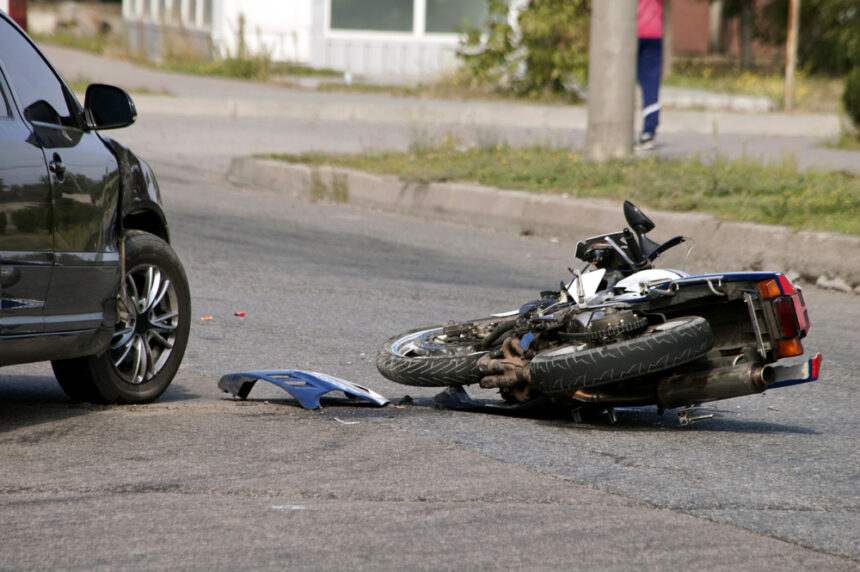Left-turn collisions are among the most dangerous types of accidents motorcyclists can experience on the road. These collisions often occur when a vehicle makes a left turn in front of an oncoming motorcycle, either misjudging the distance or failing to see the rider altogether. For motorcyclists, these accidents can be catastrophic due to their lack of protection compared to drivers in enclosed vehicles. The vulnerability of motorcyclists, combined with the nature of left-turn accidents, creates a perfect storm for serious injuries or even fatalities.
Motorcycle riders face unique dangers in left-turn situations because of their smaller size and less visible profile on the road. Drivers may fail to notice a motorcycle approaching, especially if distracted or misjudging the motorcycle’s speed. Understanding why these collisions are so dangerous is crucial for both motorcyclists and drivers to prevent devastating accidents.
The Common Causes of Left-Turn Collisions
Left-turn collisions are a frequent cause of accidents, often stemming from a combination of driver errors and misjudgments. Below are some of the most common causes of these types of collisions:
- Failure to judge speed or distance: Drivers may miscalculate the speed or distance of an approaching motorcycle, leading to unsafe turns.
- Visibility issues: The smaller size and profile of a motorcycle can make it harder for drivers to notice, especially in busy or low-visibility conditions.
- Driver distractions: Using a mobile device or focusing too much on traffic signals can divert attention away from oncoming motorcycles.
- Misinterpreting motorcycle movements: Drivers may wrongly assume they have enough time to make the turn, leading to collisions when the motorcyclist cannot stop or avoid the impact.
- Preoccupation with traffic signals: Focusing solely on traffic signals rather than surrounding traffic can cause drivers to overlook a motorcyclist in their path.
- Risk of severe injuries: Left-turn collisions often result in severe or fatal injuries for motorcyclists due to the direct impact and vulnerability of the rider.
The Severity of Injuries in Left-Turn Collisions
Left-turn collisions are particularly dangerous for motorcyclists due to the high likelihood of being thrown from the bike or directly hitting the vehicle. Unlike passengers in cars, motorcycle riders hit by a vehicle have no physical barriers to protect them, increasing the risk of traumatic injuries such as broken bones, head trauma, and spinal cord damage.
In many cases, these accidents result in life-altering injuries or fatalities, as the force of impact during a left-turn collision can be overwhelming. Wearing protective gear, such as helmets and padded clothing, can help reduce the severity of injuries, but even with safety precautions, left-turn accidents remain one of the most hazardous situations for motorcyclists.
The Role of Visibility in Left-Turn Collisions
Visibility plays a major role in left-turn collisions involving motorcyclists. Drivers often fail to see motorcyclists because they are conditioned to look for larger vehicles, such as cars or trucks when scanning the road. The smaller size of motorcycles makes them more difficult to detect, especially at intersections where multiple distractions are present.
Motorcyclists can improve their visibility by wearing bright or reflective clothing and using their headlights, even during the day. Defensive riding strategies, such as anticipating when a vehicle might turn left, can also help reduce the likelihood of being involved in a left-turn collision.
Prevention Tips for Motorcyclists
While it’s impossible to eliminate the risk of left-turn collisions entirely, motorcyclists can take steps to reduce their likelihood of being involved in such an accident. One of the best strategies is defensive driving: always assume that other drivers may not see you and anticipate their movements accordingly. Slowing down when approaching intersections, even if you have the right of way, can give you more time to react if a vehicle turns left unexpectedly.
Using your horn, flashing your lights, or making other attention-grabbing signals can also alert drivers to your presence. Wearing brightly colored gear and choosing a lane position that maximizes your visibility can make a significant difference in preventing accidents.
The Importance of Driver Awareness
Driver awareness is crucial in preventing left-turn collisions. Drivers need to recognize the dangers motorcyclists face and adjust their behavior accordingly. Being extra vigilant at intersections, looking specifically for motorcycles, and not making assumptions about the speed or distance of oncoming riders can save lives.
Public awareness campaigns and driver education programs that emphasize the importance of checking for motorcycles before making left turns are essential. Promoting motorcycle safety alongside defensive driving can help reduce the number of left-turn collisions and protect vulnerable road users.
Road Design and Safety Improvements
Improved road design can also play a role in reducing left-turn collisions. Certain intersections with poor visibility, confusing traffic signals, or inadequate signage can increase the risk of accidents. Implementing better traffic controls, such as dedicated left-turn signals or clearer lane markings, can help drivers make safer decisions and minimize the chances of a collision with a motorcyclist.
Cities and municipalities that invest in these types of safety improvements protect motorcyclists and contribute to overall traffic safety, reducing the risk of accidents for all road users.
The Role of Intersections in Left-Turn Collisions
Intersections are common for left-turn collisions, particularly because they require drivers to navigate multiple moving vehicles from various directions. Motorcyclists are especially vulnerable at these locations due to the increased complexity of scanning for smaller, faster-moving vehicles like motorcycles. Drivers may be focused on traffic lights, pedestrians, or larger vehicles, causing them to overlook a motorcyclist approaching the intersection.
Motorcycle riders should approach intersections cautiously, anticipating the possibility of a vehicle turning left in front of them. Adjusting speed and positioning allows riders more time to react to sudden turns. However, even the most vigilant motorcyclists may find themselves in a dangerous situation, underscoring the importance of driver awareness and better intersection design.
The Impact of Speed on Left-Turn Accidents
Speed plays a critical role in the severity of left-turn accidents involving motorcyclists. When a vehicle makes a left turn in front of a motorcycle, the speed at which the motorcycle travels can greatly influence the outcome of the collision. The higher the speed, the less time the driver and the motorcyclist have to react, increasing the chances of a catastrophic impact.
Motorcyclists can mitigate some of this risk by maintaining moderate speeds, particularly when approaching intersections or areas where left-turn collisions are common. Slowing down increases reaction time and allows riders to make sudden adjustments if a vehicle turns unexpectedly. This defensive strategy is crucial for reducing the potential severity of an accident.
The Role of Driver Training in Preventing Left-Turn Collisions
Driver training and education are essential in reducing the number of left-turn collisions that involve motorcyclists. Many drivers are not adequately trained to look for motorcycles when making turns, contributing to the high rate of accidents. Incorporating motorcycle awareness into driver education programs can significantly improve safety for all road users.
It is key to promote programs that teach drivers to actively scan for motorcycles and anticipate their movements. In states with mandatory motorcycle safety campaigns, accident rates have been shown to decrease, demonstrating the importance of proactive driver education.






